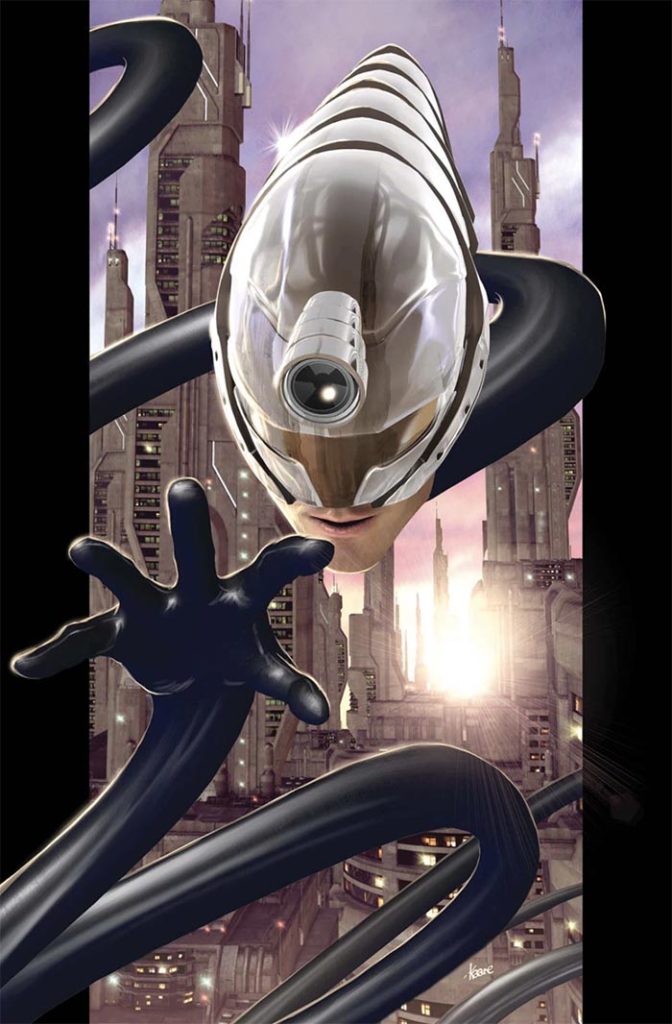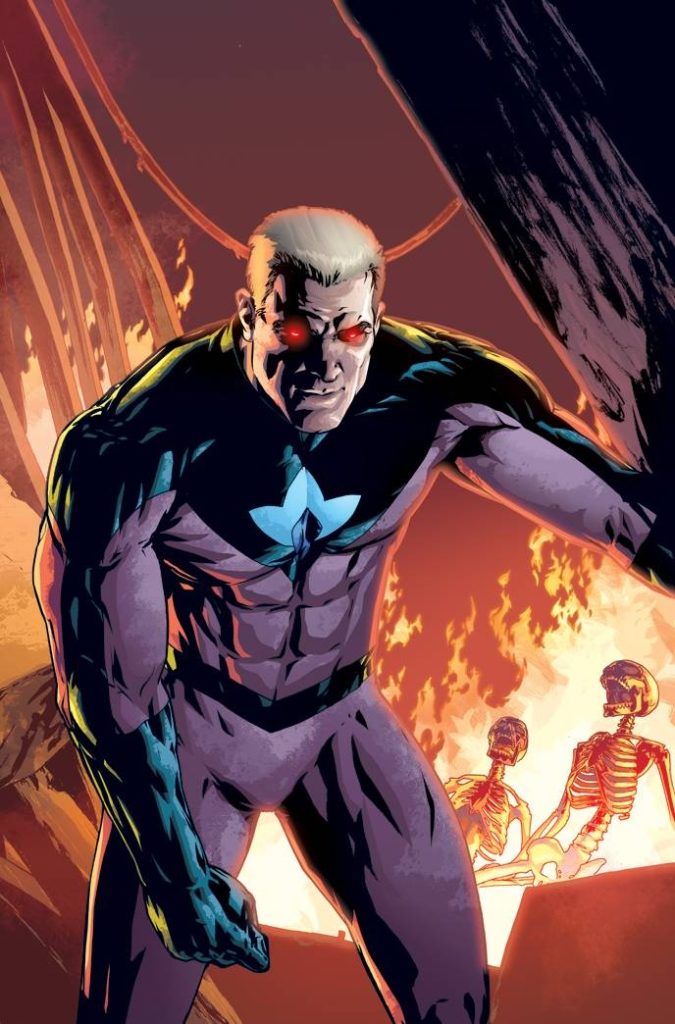
Melbourne
March 29-30, 2025
Melbourne Showgrounds

These days, every new DC, Marvel and comic book adaptation announcement is now accompanied by constant cries of “superhero fatigue” – and, honestly, it’s not an unfair criticism.
The Marvel Cinematic Universe enters its 11th year in 2019, with movies 21 and 22 nearly here, and with the DC Extended Universe now branching into standalone films outside of their shared continuity with Todd Phillips’s Joker, you’d understand why some fans and casual cinemagoers are a little exhausted with the abundance of superhero and comic book properties on big and small screens.
There is, however, one strategy that may save the superhero film from going the way of the Western, and it’s already seen Fox make a bundle of loot with Logan and the Deadpool films: go the R18+ route. Now, that’s short-hand for what the strategy is, in more complicated terms, filmmakers need to keep challenging the genre… and in steps Brightburn.
Its arrival is well timed, with John Krasinski’s A Quiet Place and Jordan Peele’s Get Out proving mainstream audiences are hungry for genre-rich original horror tales. When the Brightburn trailer dropped, the film was ingeniously pitched as an “Evil Superman” story by multiple media outlets and one viewing of the trailer confirms that that likeness is not coincidental. The premise is essentially identical to Kal-El’s origins with one bone-chilling alteration: What if Superman was evil? And any claims of “superhero fatigue” are washed away by the film’s follow-up question: What if we made a horror version of a superhero film?
Now, yes, this isn’t exactly new territory, despite a disappointing M15+ rating, Venom did (slightly) lean into the horror side of things. We also have Fox’s New Mutants and the Hellboy reboot arriving soon. Blade laid the foundations for today’s superhero craze and didn’t shy from gore and scares, like Darkman, The Crow and Spawn before it, which have reboots on the way.
There’s also M. Night Shyamalan’s Unbreakable and Split which merge the superhero genre with thriller and horror, and don’t forget The Toxic Avenger and Swamp Thing series from the ‘80s.
 So, no, Brightburn isn’t the first superhero/horror film, but its tongue-in-cheek homage and dark satire of Superman reveals what audiences are becoming eager to see: the superhero mythos challenged. Audiences enjoy seeing their heroes getting messed with, as Avengers: Infinity War’s shock ending and box-office haul confirms. An evil version of a beloved age-old hero is a great place to start when asking how the film and television industry can keep this trend fresh.
So, no, Brightburn isn’t the first superhero/horror film, but its tongue-in-cheek homage and dark satire of Superman reveals what audiences are becoming eager to see: the superhero mythos challenged. Audiences enjoy seeing their heroes getting messed with, as Avengers: Infinity War’s shock ending and box-office haul confirms. An evil version of a beloved age-old hero is a great place to start when asking how the film and television industry can keep this trend fresh.
We say start, but in anticipation of Brightburn we got to thinking, what are other ingenious “evil versions” of superheroes from comic books and beyond?
Now, when we say “evil superheroes” we don’t just mean heroes who become villainous, the “super” part is a key element. Nor do we just mean super villains, and yes technically Brightburn can just be described (and is) as a super villain origin story, but what we mean here are characters who appear heroic but are hiding or unleash their dark side.
There needs to be an inkling of tragedy or fall from grace or sheer horror at a character who has nearly, limitless potential for good, who descends into evil.
You have Syndrome from The Incredibles who’s essentially a Robin mixed with Iron Man, whose childhood rejection morphs him into a conniving megalomaniac who manipulates the world into believing he’s a superhero. This is very similar to another, later, cartoon superhero in Megamind’s Titan, who starts off heroic but is manipulated and ultimately seduced by the dark side. Then there’s Chronicle’s Andrew Detmer who is inches from becoming a hero until we realise we’ve been watching him become villainous, or even Unbreakable’s Mr Glass who appears, at first, like an ally to Bruce Willis’s David Dunn but later is revealed to be quite the opposite due to tragic circumstances.
Last honourable mentions go to Evil Rick and Morty from Rick and Morty, Elektra’s resurrection as Black Sky and Jean Grey’s transformation into Dark Phoenix, which we’ll see (again) in cinemas this year.
These are all note-worthy contributions to the “evil superhero” idea but in compiling our list, we narrowed it down to characters whose downfall is Shakespearean tragic, whilst also creating an almost filled-out wish list of characters ripe for adaptation so as to continue the fight against Superhero fatigue.
Crime Syndicate of America/Ultraman, aka Kal-II and others (DC Comics)
Scroll down any comments section of the Brightburn trailer and you’ll see somebody cry, “It’s Kal-II!” They’re not wrong to imply the producer James Gunn may have drawn direct inspiration from DC’s twisted take on the Justice League. The Crime Syndicate of America, aka the CSA, are comprised of evil incarnations of your most beloved DC Superheroes: Superwoman (evil Wonder Woman), Owlman (evil Batman), Johhny Quick (evil Flash), Power Ring (evil Green Lantern) and Ultraman (evil Superman), aka Kal-II.
Residing on Earth-3 in the DC Multiverse, this crime faction of evil heroes originated in the Golden Age and have often revolved around “event” storylines, most notably the Crisis series’. What makes these characters much more than simple super villains is how closely they resemble their good counterparts but have taken a dark alternate route in their story. There’s something painful and terrifying about seeing a recognisable face commit violent and evil actions. As it stands the team have been seen on television in various animated iterations of the DC Universe and Smallville’s Clark Luthor brought us a live-adaptation Kal-II, so maybe we’ll see a CSA movie or appearance in the DCEU soon…

Maker
Maker, aka Evil Reed Richards (Marvel)
Like the CSA, and as mentioned previously in Black Sky and Dark Phoenix, there’s no shortage of evil versions of superheroes from DC and Marvel, but evil Reed Richards from Marvel’s Ultimate universe takes out the top spot. Hailing from Earth-1610, this younger Mr Fantastic begins as recognisable to his classical and original doppelgänger. Where it all goes wrong for this Reed is after the cataclysmic loss of many heroes in the Ultimatum mini-series, his relationship with Sue Storm disintegrates and the Fantastic Four break up, leading to an ominous change in his perspective born from his hatred of the universe he is stuck in. After committing various atrocities and embracing his new persona he becomes super villain Maker. He’s a relatively new character, debuting back in 2004, so as of yet there’s been no hint of him on small or big screens. Let’s hope after the Fox/Disney deal is solidified and the Fantastic Four joins the MCU, who have already borrowed elements from the Ultimate universe (Samuel L. Jackson’s Nick Fury) that he becomes a big bad for another team-up blockbuster.
Ozymandias – Watchmen (Vertigo)
We can’t discuss subverting and challenging the superhero genre without mentioning Alan Moore and Dave Gibbons’ Watchmen. The seminal graphic novel from 1986 turned not just the superhero genre upside down but its form too, shape-shifting not just how we see these “heroic” characters but redefining the way we tell these stories. Watchmen’s cinematic panelling and sporadic prosaic chapters provided a lens through which we witnessed all the flaws and failures of these “heroes”. Whether it be Rorschach’s sociopathic extremist political views or The Comedian’s inhumanity and misogyny, Watchmen has tragic characters in abundance and the most twisted of all is Ozymandias. His intentions and motivations aren’t a far cry from Thanos’s – well, from Infinity War, in Infinity Gauntlet he’s more cartoonishly villainous. Like The Mad Titan, Ozymandias seeks to achieve a “greater good” by committing a sacrificial mass-genocide to bring about peace. What makes Ozymandias interesting is how stoic and straight laced he is. No twirling moustache or megalomaniacal laugh accompanies his actions, he’s too busy enacting his masterful plans to lay them out for the heroes to thwart, which is ingeniously referenced in a witty one-liner. Unfortunately the cinematic Adrian Veidt was not as subtle as his comic book original self but comic readers are currently enjoying him in Geoff Johns and Gary Frank’s Watchmen sequel Doomsday Clock. We’ll also soon see an elderly Ozymandias portrayed by Jeremy Irons in HBO’s Watchmen TV series.
The Plutonian – Irredeemable (Boom! Studios)

The Plutonian
If you’re not convinced by this list’s contention in differentiating between “super villains” and “evil superheroes”, the opening six pages of Mark Waid’s Irredeemable is our thesis actualised. What makes heroes so awe-inspiring is the combination of power and responsibility. An omnipotent individual who is selfless and compassionate erases the idea of fear and corruption from our minds. That’s what makes them super; they’re not susceptible to human failings and dark inhibitions. So if you remove that super element… they’re terrifying. Read those first six pages of Irredeemable and report back: childhood terror of the bogeyman grips your heart. That’s why The Plutonian takes out our top spot; he’s a hero who just one day decides to slaughter the world en-masse and even superhero group The Paradigm struggle to stop him. The good news is a film adaptation is on the way at 20th Century Fox. The less good news is that was reported back in 2016… You’re in luck though because once you’ve torn through the 37 issue run, there’s spin-off Incorruptible for you to jump into.
Long story short: we’re excited for Brightburn and we’ll be revisiting these “evil superheroes” while we wait in anticipation. If the warm reception to the trailer is anything to go by maybe the film’s success could see even Disney/the MCU to start dabbling in horror: imagine if we got a mainstream Marvel Zombies film.
Lead image: Kal-Il






